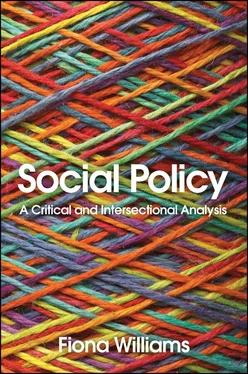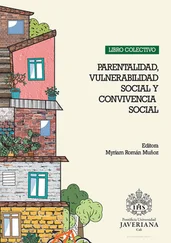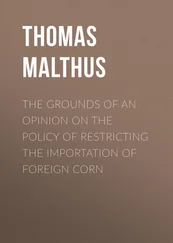1 ...8 9 10 12 13 14 ...21 One example of this, which is discussed in chapter 4, is the salience of the social relations of race and racism in understanding the disproportionately higher mortality rates in the UK during the Covid-19 pandemic for BAME groups (from around four times higher than white counterparts and similarly reflected in other Western countries). It was experiential evidence from BAME groups that began to unlock the role of systemic racism in these deaths and eventually, under pressure, to be recognized by Public Health England (2020a). An intersection of racially subordinated social positions in the labour market, especially as key workers and in the least valued areas of social care and geriatric care, in precarious work, in overcrowded housing, along with morbidity rates associated with health inequalities, placed BAME men and women at greater risk (Qureshi et al. 2020b; Lawrence 2020; Patel et al. 2020). Digging deeper reveals the specific ways in which different forms of racism contribute to these disparities and intersections. For example, all those poverty-related conditions – work, insecurity, housing and neighbourhood – carry greater risks to ill health, and ill health predisposes to severe illness and death from the virus. However, it is the intersection of these with racisms that intensifies health inequalities for BAME groups (IHE 2020). This includes institutional racism that prevents minority groups from accessing, for example, job opportunities or promotions and structural racism in which negative discourses (a ‘hostile environment’) shape interpersonal encounters. The greater the exposure to everyday racial micro-aggressions and the emotional labour involved in managing them – what Claudia Rankine (2014: 11) calls ‘trying to dodge the build-up of erasure’ – itself also generates ill health. 4As I explain in chapter 4, the generalities attached to the virus and its mitigation strategies worked in specific and intersecting ways both within and across inequalities of class, race, gender, age and disability. It is this dynamic between the general, specific and intersecting which marks the capacity of an intersectional analysis to understand the complexity of social phenomena.
For the analysis in this book, the contemporary context of welfare states and political struggle demands an analysis that can capture not only these intersections of inequality but also those interconnections between different areas of crisis which help shape them. The crises of financialized capital, of care and social reproduction, of climate change and of the racializing of borders are further made salient by the struggles they have provoked (see chapters 3, 5and 7). This highlights, for example, the salience of bordering practices within the UK’s austerity welfare state in which the processes of restricting the rights of asylum seekers have been extended to different categories of benefit claimant. Such connection requires a frame of analysis that allows for the interconnections without reneging on the specificities of gender or race or class (see chapter 4). That said, it is a tricky exercise where I am aware of the limitations in the scope of my knowledge (see appendix II).
A final note on the pitfalls of intersectionality involves not assuming parallels between different forms of difference in the eagerness to seal solidarities. In her critique of crip theory, Kirstin Marie Bone (2017) argues that, while crip theory, like queer theory, seeks to break down the binary of disabled/able-bodied, some versions do so at the expense of obscuring the voices of diversity in disability identities. ‘Crip’, an ironical reclaiming of ‘cripple’, she argues, privileges visible disabilities and shifts too quickly into assuming that crip theories of disability are parallel or a subset of queer theory (she cites McRuer 2006). Such claims fail to understand the place of ‘rhetorical adjacency’ in which solidarity is expressed by being alongside disabled people in their struggles, not speaking for them or as them by claiming ‘crip’ identity as an able-bodied person (Bone 2017: 1308). By contrast, ‘transversal politics’ has been one way of describing the communication of ‘rooting and shifting’ that is required between activist groups to develop coalitional solidarities (Massey 1999; Yuval-Davis 1999), which is discussed in chapter 7. The main point here is that, both in theory and in action, attention is required on how to avoid ‘universalistic politics (that overemphasizes commonalities to the neglect of differences) … and particularistic politics (that overemphasize differences to the neglect of commonalities)’ (Irvine et al. 2019: 8).
An important contribution to refining the methodology of intersectionality is Leslie McCall’s work (McCall 2005). She distinguishes between three approaches. Representing these on a continuum, the first, and probably least used, is anticategorical complexity , which focuses on deconstructing analytical categories and rendering them fluid and constantly unstable. The second, intracategorical complexity , retains a critical eye to the boundaries by which categories are defined and constructed but is interested in the points of intersection between multiple categories and their shifting social relations. This approach reveals the erasure of those experiences forged through such intersections (as in the original meaning of intersectionality in black feminist struggle and the point made by Hankivsky and Jordan-Zachery in the quotation above). The third approach, intercategorical complexity , while acknowledging the fluidity of social categories, nevertheless employs them as ‘anchor points’ (Glenn 2002, cited in McCall 2005: 1785) in order to investigate, indeed to measure, the extent and shifting of social relations of inequality between and across multiple groups. This follows a strategic categorizing in order to generate a more complex and comparative picture of power and inequality. It focuses not on the ways single groups transect different forms of subordination and domination but on the overall patterns across multiple groups. This, McCall argues, is the least practised of the three approaches but is the one which she unfolds when drawing upon her quantitative analysis of patterns of class and racial inequalities among women in the United States (McCall 2001). The emerging picture is one of complexity in which no single dimension of inequality predominates and in which the context of place in particular shapes the patterns of class, race and gender inequalities. Such an approach is important in that it goes beyond the use in quantitative methods of social categories as static variables and it is particularly useful to social policy in which the measurement of poverty and inequality is integral to its subject matter.
I return in the conclusion to the ways intersectionality is used in this book. For now, I draw out the main points of a critical approach to social policy.
A critical approach to social policy
As well as an intersectional approach, this book employs a critical approach. This may seem oxymoronic; after all, intersectionality is itself a critical approach. But what I intend by emphasizing this is the importance of keeping in play theoretical insights developed in and subsequent to earlier social policy critiques. Through this I define a critical approach as one that places struggles and contestations over social justice at the heart of its theories, analyses and practices of welfare provision and uses this position to question that which is taken for granted in the concepts, methods and discourses used in the field of study of social policy and welfare states (Lister 2010: 57–94). Contestation and contradiction were central to the early Marxist political economy of welfare analyses (Gough 1979; Ginsburg 1979), in which the welfare state was understood as the outcome of an uneasy truce between the interests of capitalism for a healthy, disciplined workforce and the interests and struggles of the working class for protection from poverty, unemployment and ill health. In this was its crucial contradiction: that capitalism couldn’t live with a welfare state but neither could it live without it (Offe 1984).
Читать дальше












